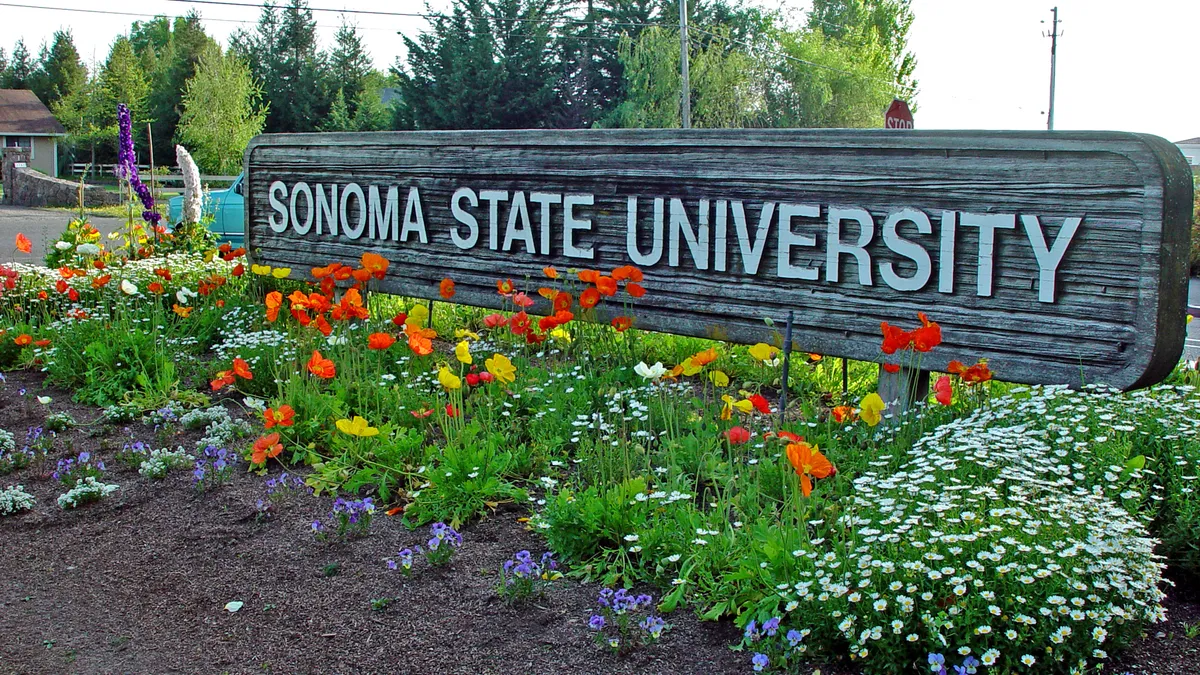West Virginia University President Gordon Gee says when he “first started as a university president nearly 40 years ago, you’d send your kid off to school, maybe they’d join a fraternity or sorority, then they’d come back home and get a real job.”
“Now, our universities and colleges and higher ed in general is the economic driver” of the country, he said, addressing a crowd gathered in Washington, D.C. Wednesday for the Committee on Economic Development’s policy conference.
Gee said the purpose of higher ed shouldn’t be an either-or proposition; it should prepare students to get good jobs and it should provide an environment in which they can find themselves socially.
Referencing the generation of students which is now graduating high school and moving into higher ed, he said, “The gap between the millennial generation and the Z generation is as wide as the gap between me and the Z generation … so what we think about as higher education institutions has to be very different,” he said, noting a large percentage of incoming students “have started their own business, they don’t want to work for anyone else.”
However, the slow-to-adapt nature of higher education is falling behind the needs of both students and the workforce, and therefore isn’t really helping anyone, he explained.
“Most universities are like elephants,” said Gee. “They’re big, they’re slow, they’re bureaucratic, and they don’t want to change.” Comparing the movements of a ballerina, which are quick and agile, he continued, “we’re going to have to be like ballerinas, or we’re going to end up like the dinosaurs.”
Matthew Sigelman, CEO of Burning Glass Technologies, added that higher ed needs to “be able to map the language of academia to the language of the job market.”
“There’s already a long tail of credentials that have no value with employers — certificates have even less,” he said. “We’ve tended to address this with a supply-driven mentality,” he continued, saying higher ed is administered based on the majors a school has available, forcing students to choose a path based on what’s being offered.
He suggests approaching higher education “in the other direction, [saying] where are employers hurting — there are specific areas where the supply chain is failing them and they can’t get the talent they need. So identify those gaps and you might get a credential" which is actually valuable to the workforce, he said.
Gee said the answer lies in not just thinking outside the box, but blowing it up. For starters, considering a horizontal organization of higher education, one in which “you get rid of colleges, you get rid of departments, and you move towards organizing around centers and institutes and immediately respond to the challenges of today,” rather than boxing students in by majors.
Equally important, he said, is “we’ve got to create partnerships.”
“We’ve had this pecking order that if you go to a community college or a technical school, you’re not as valuable,” he said, addressing the elitism in higher education. “But the reality is the two- and [regional] four-year schools are the front door to the American economy,” and institutions at all levels need to work together to push the needle ahead for the country.
The bottom line for higher education and the way ahead is one that has been discussed repeatedly over the last decade: The industry must learn to adapt to the needs of consumers — both students and the employers who will eventually hire them — much faster. Without a more agile structure and without being in tune with what consumers expect of them, higher education as an enterprise will collapse.
“If we think about it as a flowing conversation with points of opportunity [rather than in a box], I think that’s the way I’d prefer to think about it,” Gee said.








